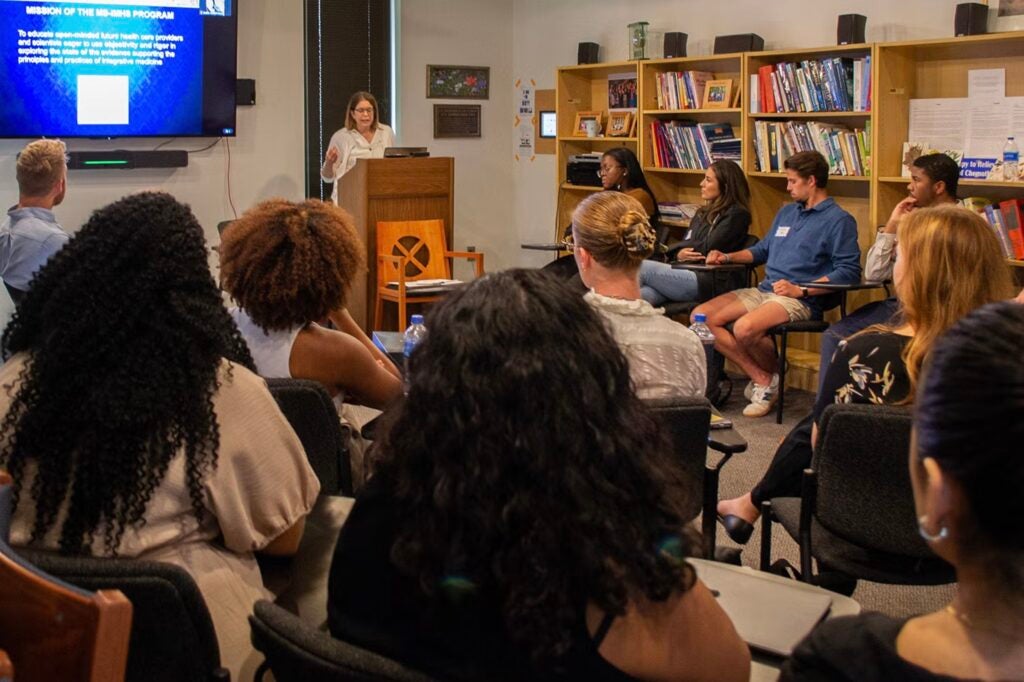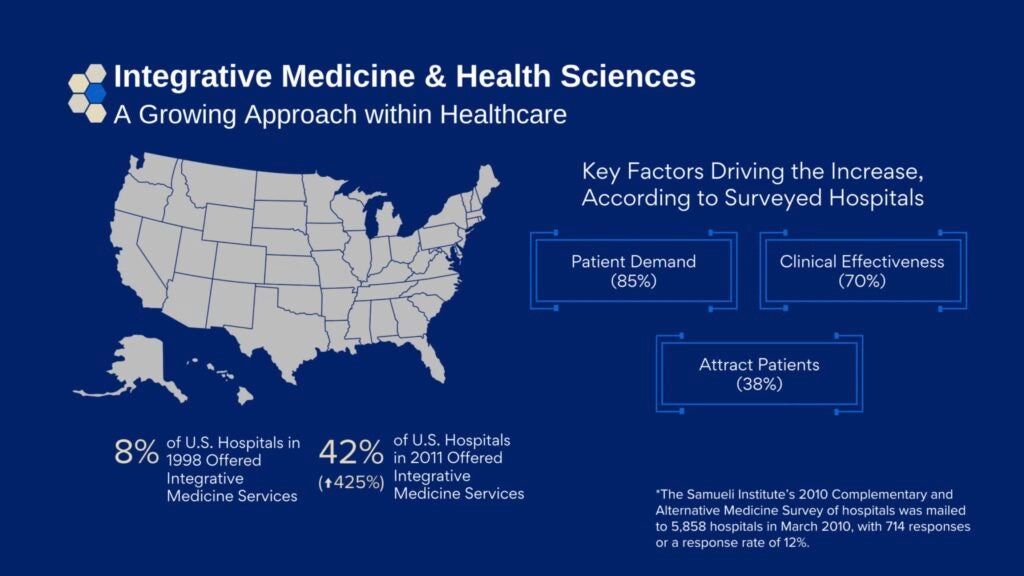About Integrative Medicine
- Jump To: What Is Integrative Medicine?
- What Is Complementary and Integrative Medicine (CIM)?
- What Is Whole Person Health?
- Why an M.S. in Integrative Medicine & Health Sciences?
What Is Integrative Medicine?
Integrative medicine is an approach to health that combines conventional biomedicine with alternative practices and traditions from around the world, such as acupuncture, massage, functional/integrative nutrition, herbs and supplements, and mind-body interactions.
At Georgetown University, we work with students pursuing careers in health care who are eager to develop an exceptional skillset that combines three fundamental pillars: scientific thinking, evidence from research, and integrative medicine.
A Growing Field
Georgetown Integrative Medicine & Health Sciences Program Director Hakima Amri explains the origins and evolution of integrative medicine since the 1990s.
Integrative Health Care
According to the National Center for Complementary and Integrative Health at the National Institutes of Health, integrative health refers to care that combines treatments from biomedicine with evidence-based practices from other medical systems, such as traditional Asian medicine, Ayurveda, naturopathy, and Unani. Integrative health focuses on well-coordinated care from providers with diverse expertise, addressing the patient’s physical, mental, and behavioral needs. This approach aligns with the Whole Person Health model, aiming to deliver comprehensive care for the 21st-century health care system.
What Is Complementary and Integrative Medicine (CIM)?
Complementary and integrative medicine (CIM), also known as complementary and alternative medicine (CAM), refers to therapies that are not typically included in the curricula of U.S. academic medical schools or commonly offered in U.S. hospitals, as noted in surveys from the early 1990s. Examples include acupuncture, herbal remedies, meditation, yoga, and massage therapy. Today, the term “integrative medicine” is most commonly used.
What Is Whole Person Health?
The Whole Person Health model expands health care to encompass a bio-psycho-social-behavioral-environmental approach. It goes beyond merely treating diseases, aiming to address the broader factors that contribute to overall health and wellbeing.
Why an M.S. in Integrative Medicine & Health Sciences?


The Georgetown University M.S. in Integrative Medicine & Health Sciences – the only program of its kind in the United States – encourages students to dig deeper into the mechanistic basis for complementary and integrative medicine (CIM) therapies such as acupuncture, massage, functional/integrative nutrition, herbs and supplements, and mind-body interactions. Our program incorporates a firm foundation in biomedical science, in-depth exposure to CIM disciplines, and practice in critical thinking and evidence-based evaluation of CIM modalities, providing a holistic understanding of the interaction between medicine and the human body.
Our mission is to train a new generation of open-minded health care providers and scientists to apply the knowledge and skills of complementary and integrative medicine (CIM). We prepare students for private- and public-sector careers related to CIM research, education, and health care.
The demand for well-informed and properly trained health care providers and scientists within the CIM field has grown out of intense consumer-driven interest in CIM and the increasing integration of CIM modalities into clinical practice. Our program is the only one in the nation that offers such an innovative approach, placing Georgetown University at the forefront of graduate education in CIM.
